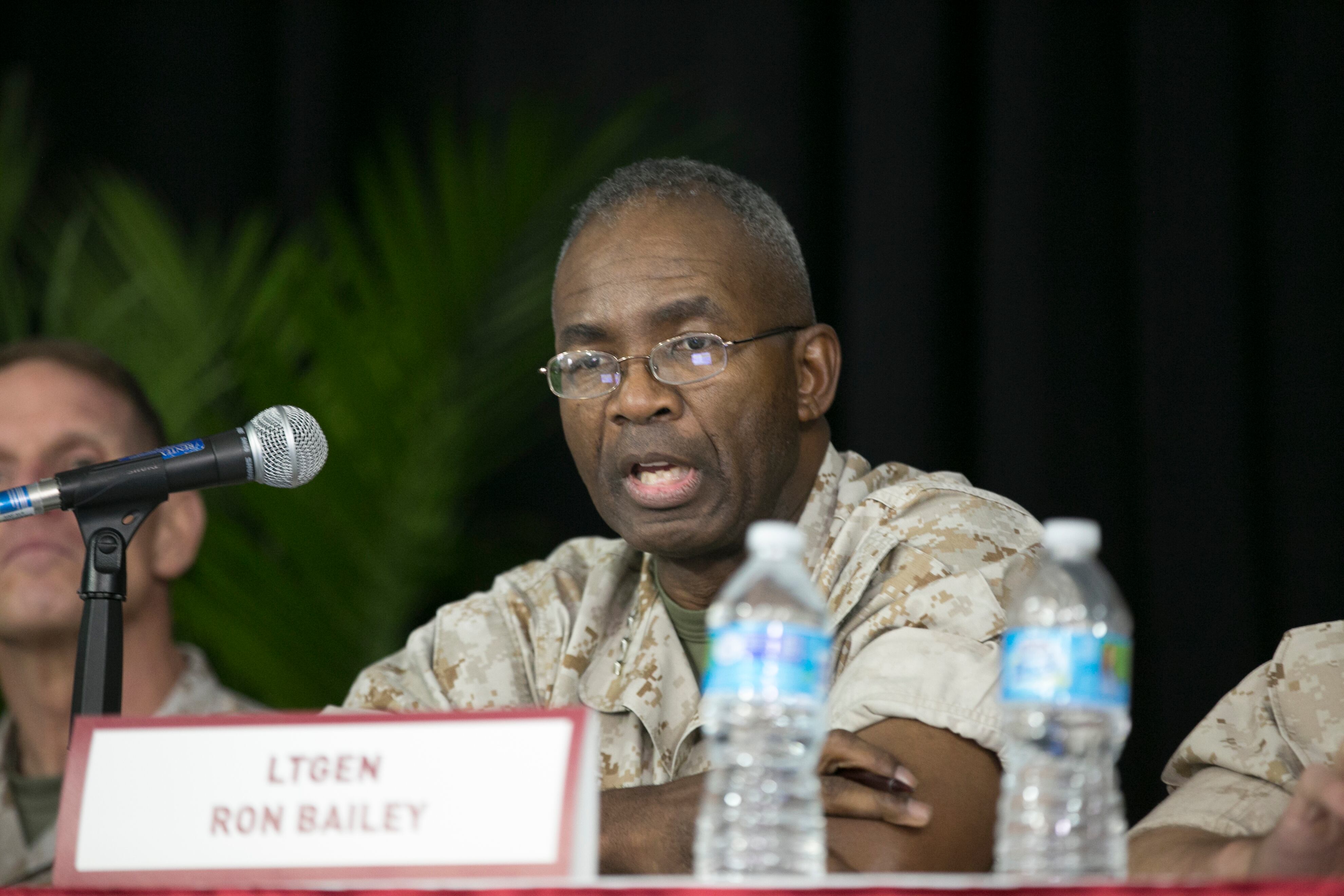MARINE CORPS BASE QUANTICO, Va. — A panel of top Marine leaders painted a daunting picture Tuesday of an increasingly complex operating environment in the decades ahead as troops Marines are likely to be called on to fight in mega-cities near the world's oceans.
Several Marine Corps generals said during a panel discussion here at the annual Modern Day Marine expo hereIt is a setting that will present a complex set of challenges, several generals said at Marine Corps Base Quantico, Virginia, during the panel titled Building the Future Marine Corps EF-21: Harnessing Innovation across the MAGTF. To that to meet those challenges they will need to further refine their new concept of operations, Expeditionary Force 21, but they must also count on industry to furnish innovative equipment solutions, they said.
"The innovation piece is critical," said Lt. Gen. Robert Walsh, the deputy commandant for Combat Development and Integration and commanding general of Marine Corps Combat Development Command.
"We've got to [be] better at getting stuff out to the fleet — get it out there quickly, get it to our Marines to experiment with. If they break it and it doesn't work, we go back to the drawing board," he added.
Also on the panel, titled Building the Future Marine Corps EF-21: Harnessing Innovation across the Marine Air-Ground Task Force, was Lt. Gen. Jon Davis, deputy commandant for aviation; Lt. Gen. Ronald Bailey, deputy commandant for Plans, Policies and Operations; Lt. Gen. Michael Dana, deputy commandant of Installations and Logistics; Brig Gen. Dale Alford, the commanding general of Futures Directorate and the the Marine Corps Warfighting Lab; and Brig. Gen. (sel.) Roger Turner, the commanding general of Capabilities Development Directorate.
All painted a picture of an unpredictable, fast-changing, chaotic environment in which Marines will face off with a hybrid threat — a fusion of tactics and military weaponry that will include an Iraq-style insurgency and nation-state military capabilities all on the same battlefield.

Lt. Gen. Ronald Bailey participates in a Sept. 22 panel discussion about "Harnessing Innovation across the MAGTF" at the Modern Day Marine expo at Marine Corps Base Quantico in Quantico, Va.
Photo Credit: Mike Morones/Staff
Bailey illustrated the threat with a photo from Ukraine in which a single troop formation included some fighters in what appeared to be Russian military uniforms mixed with others toting AK-47s in sneakers and jeans.
"This is the reality of the fight," he said.
That means Marines will need, among other things, better non-lethal capabilities from industry to prevent civilians deaths. But the need for innovation to meet quick-changing threats does not end on the physical battlefield, the panelists said.
Turner spoke of the need for innovation that will enable allow future Marines to fight in five rather than three domains. While Marines have long mastered fighting at sea, on land and in the air, they will now have to master cyber space and eventually space.
"We are going to need a Marine Corps that can respond in a '5-D' environment with cyberspace and space added to it," he said.
Future industry developments must be driven by that reality, he said. added.
In the near term, that includes better ability to maneuver in the electromagnetic spectrum and exploit up-to-the-minute information with better communications, command and control capabilities. Efforts are already underway, for example, to test the use of iPads that feed intelligence to students training at the Infantry Officers Course. who are conducting training. The testing could one day soon result in technology that provides unit leaders an accurate picture of the current reality on the ground before they pile out of a rear Osprey hatch and charge into battle.
Intelligence updates in transit become especially important when considering scenarios outlined by Bailey in which Marines, for example, might have to transit more than 3,000 miles from Europe to reach a crisis in Africa.
"The new normal was Benghazi and Benghazi created come challenges for us," he said, referring to the 2012 Islamic militant attacks on the U.S. diplomatic compounds in Libya that left dead two high-ranking U.S. officials and two CIA contractors dead.
Marines must be able to reach similar future flash points quickly and with an accurate picture of what is occurring on the ground, Bailey said.





